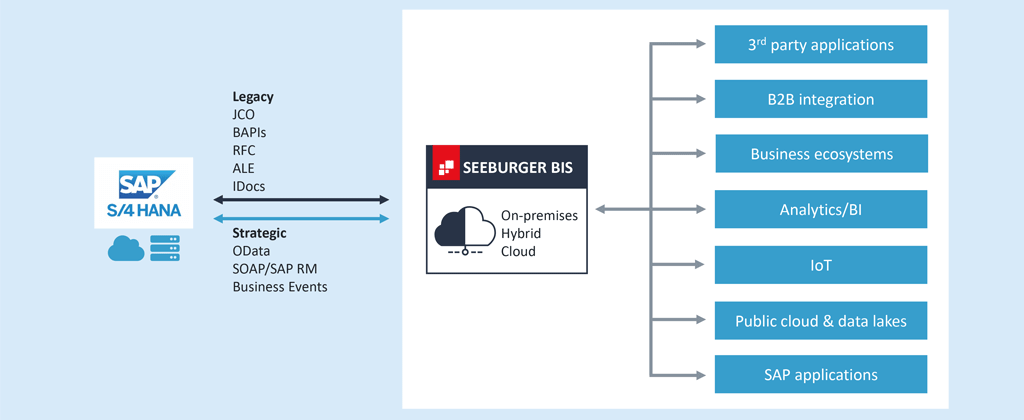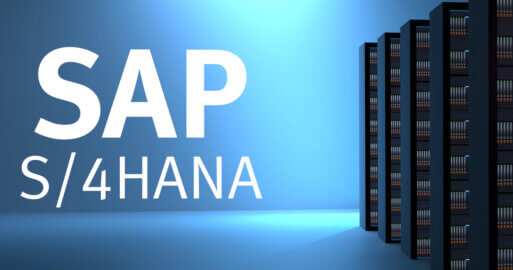S/4HANA Integration is Best Left to the Experts

Migrating to SAP S/4HANA brings with it a number of complex integration issues. Approaching these successfully needs expertise – right from the start. Unfortunately, projects for both established and new SAP integration technology have shown that a number of integration needs are overlooked purely due to a lack of experience. From interface technology to multi-cloud scenarios – if you want to use established technologies and still be ready to face the future, you need to employ experienced providers and a powerful integration platform in your migration.
Implementing S/4HANA is complex. As well as an intimate knowledge of all the technologies, connectors and applications used in your organisation, you also need to keep an eye on current and future trends and market drivers, and to consider these in your planning. This particularly affects the following areas:
Interface technologies
Once you compare your current setup with the possibilities opened up by such a comprehensive migration, it quickly becomes clear where changes are unavoidable, where they are recommended or where they can simply be useful to continue using existing systems and still be able to react quickly and flexibly to future requirements. Can, for example, established interface technologies such as the trusty IDocs and ALE still be used in integration scenarions such as A2A (application to application), B2B, B2C, and B2G? Let’s also ask the same question of established methods such as JCO, BAPIs and RFC. Would using OData for a synchronous API be a modern, future-proof alternative? What advantages does the proprietary SOAP interface SAP RM offer? When migrating to S/4, you need to question the usefulness of all the technologies you’ve currently got in use. And, as always, you need to decide on a case-by-case basis how they fit – or not – in your future system environment.
Integrating existing and future applications
There are also a number of possibilities for integrating existing and future applications, whether from SAP or non-SAP. These have diverse system requirements, and integrating non-SAP products especially into S/4HANA needs to be done with care. You will need to be able to support integration patterns and technologies which allow both realtime and batch processing to run in parallel. You will also need to deal with a wide variety of integration technologies from a diverse range of systems, platforms, applications, and third-party vendors. Mapping interfaces and employing configurable application and system connectors will enable you to use existing mechanisms and definitions to connect what you need in the future, whether this is an SAP (or non-SAP) ERP system, a CRM programme, a procurement platform, databases, an industry-specific platform, or something entirely different.
Looking to the future
A multi cloud strategy, increasingly complex supply chains, smart services, and more require an integration solution which can react quickly, simply and flexibly to rapidly changing and constantly growing needs. Where would an on-premises solution be the best way forward? Where would it be sensible to use cloud services instead? And when could a hybrid integration platform be the best option? Could certain integrative functions for secure managed file transfer, API management or IoT be carried out in house, or would it make more sense to bring in an external partner that offers Integration as a Service?

Essentially, you need two main things to successfully migrate to S/4HANA:
- Experienced interface experts with an intimate knowledge of SAP
- A powerful integration platform such as the SEEBURGER Business Integration Suite (BIS), to cover all your integration needs.
A comprehensive and vendor-neutral hybrid integration platform, the SEEBURGER BIS can provide everything you need to sucessfully implement and integrate S/4HANA, while offering maximum flexibility for your future integration needs.
Thank you for your message
We appreciate your interest in SEEBURGER
Get in contact with us:
Please enter details about your project in the message section so we can direct your inquiry to the right consultant.
Written by: Thomas Kamper
Thomas Kamper, SVP Strategic Product Management, is responsible for strategic product initiatives related to all SEEBURGER’s business integration technology and solutions. The focus is currently on API solutions and Big Data. In addition, he is responsible for solutions that enable organizations to master challenges of visibility and to control the proper execution of digitalized business processes. Thomas rejoined SEEBURGER December 2017. Before, he worked for many years as a hands-on interim manager and business advisor supporting C-level executives within software and cloud service providers to make their strategic product initiatives successful.





